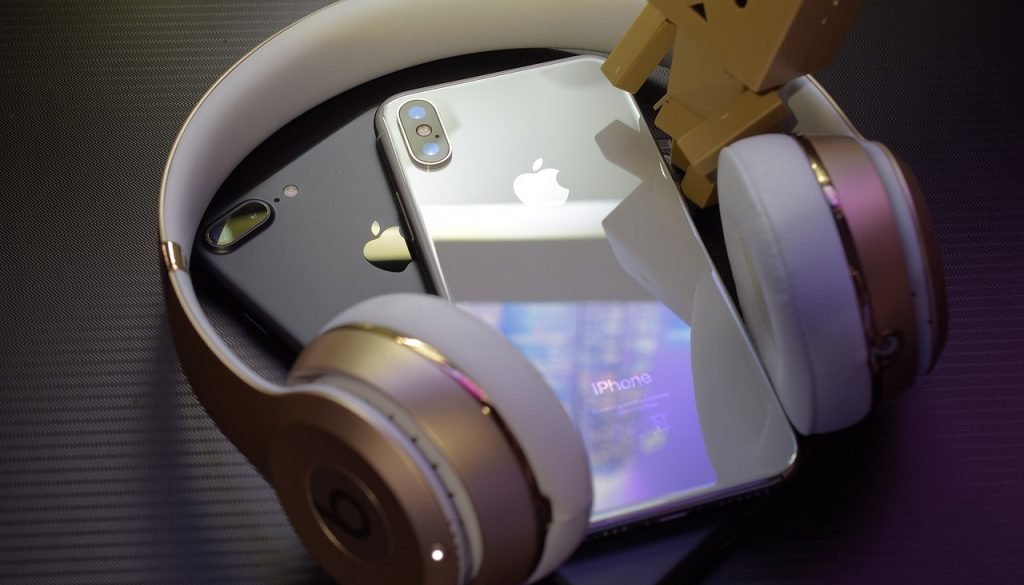The Ultimate iPhone 10 Review a Comprehensive Look at the Features, Performance, and Value
Introduction:
The iPhone 10, released in 2017, marked a significant milestone in the evolution of Apple’s flagship smartphone. With its stunning OLED screen, facial recognition technology, and powerful A11 Bionic chip, the iPhone 10 set a new standard for mobile devices. In this comprehensive review, we will examine the features, performance, and value of the iPhone 10 to help you make an informed decision about whether this device is right for you.
Part 1: Design and Display
The iPhone X (pronounced “ten”) was a significant departure from previous iPhone designs. It featured a sleek, modern look with a stainless steel frame and glass back, giving it a premium and luxurious feel. The design was a major selling point for the iPhone X, and it set a new standard for smartphone design.
One of the most notable design elements of the iPhone X was its edge-to-edge display. The phone’s screen extends to the edges of the device, with a small cutout at the top for the front-facing camera and sensors. This design allowed Apple to create a larger display without making the phone itself much larger than previous models. The display also uses OLED technology, which provides more vibrant colors and deeper blacks than traditional LCDs.
The iPhone X’s glass back was not only visually appealing, but it also enabled wireless charging. The device uses the Qi wireless charging standard, which means it can be charged on any Qi-compatible charging pad. The glass back also gave the phone a premium feel and made it easier to grip compared to previous iPhone models with aluminum backs.
The stainless steel frame of the iPhone X provided a sturdy and durable feel, while also giving the phone a sleek and modern look. The frame is highly resistant to scratches and dings, which helps to maintain the phone’s appearance over time. The frame also houses the phone’s volume and power buttons, as well as its SIM card tray.
Overall, the design and build quality of the iPhone X were top-notch. The phone felt solid and well-built, with attention paid to every detail. The device’s sleek design and premium materials set it apart from other smartphones on the market, and it remains a highly sought-after device today.
Part 2: Performance and Features
Processor: The iPhone 10 is powered by Apple’s A11 Bionic chip, which provides lightning-fast performance and efficient power management.
Face ID: The iPhone 10 features facial recognition technology that allows you to unlock your device with a glance. Face ID is fast, secure, and works well in low-light conditions.
Camera: The iPhone 10 has a dual-lens rear camera system with 12-megapixel sensors and optical image stabilization. The camera produces excellent photos and videos, even in low-light conditions.
Augmented Reality: The iPhone 10 supports augmented reality (AR) apps and games, allowing you to experience immersive digital content in the real world.
The iPhone X was released in 2017 and was Apple’s flagship smartphone at the time. It was designed to compete with other high-end smartphones on the market, such as the Samsung Galaxy S8 and Google Pixel 2. So, how did the iPhone X stack up in terms of performance and user experience?
Performance:
The iPhone X was powered by Apple’s A11 Bionic chip, which was a significant improvement over the previous generation of iPhone processors. It featured six cores (two high-performance cores and four efficiency cores) and an Apple-designed graphics processing unit (GPU). The A11 Bionic chip provided excellent performance, with the iPhone X scoring high marks on benchmark tests. The phone was fast and responsive, with smooth animations and transitions.
User Experience:
The iPhone X introduced several new features that improved the user experience. One of the most notable was Face ID, a facial recognition system that replaced Touch ID as the primary method for unlocking the phone. Face ID was fast and accurate, and it worked in a variety of lighting conditions.
The iPhone X also introduced a new gesture-based interface that replaced the traditional home button. Users could swipe up from the bottom of the screen to return to the home screen, swipe up and hold to access the app switcher, and swipe down from the top right corner to access Control Center. The new interface was intuitive and easy to use, and it made one-handed use of the phone more comfortable.
Another feature that improved the user experience was the iPhone X’s camera. It featured a 12-megapixel dual-lens camera system that was capable of capturing stunning photos and videos. The camera also introduced Portrait mode, which used advanced algorithms to create a shallow depth of field effect, blurring the background and making the subject stand out.
Camera and Imaging Capabilities: A Comprehensive Review of iPhone 10’s Camera System
The iPhone 10, released in 2017, marked a significant milestone in the evolution of Apple’s flagship smartphone. With its stunning OLED screen was released in 2017 and featured a 12-megapixel dual-lens camera system that was a significant improvement over previous iPhone models. The camera system featured a wide-angle lens with an f/1.8 aperture and a telephoto lens with an f/2.4 aperture, allowing for a wide range of photographic capabilities. Here’s a comprehensive review of the iPhone X’s camera system:
Image Quality:
The iPhone X’s camera system produced high-quality images with excellent color accuracy and dynamic range. The camera was particularly good in low-light conditions, thanks to its larger sensor and improved image processing algorithms. The telephoto lens also enabled users to take photos with a shallow depth of field, creating a blurred background effect that made the subject stand out.
Portrait Mode:
The iPhone X’s camera system introduced Portrait mode, which used advanced algorithms to create a shallow depth of field effect. This feature worked well, creating a natural-looking blurred background that made the subject stand out. The Portrait mode also introduced Portrait Lighting, which used advanced lighting effects to enhance the subject’s appearance.
Video Recording:
The iPhone 10, released in 2017, marked a significant milestone in the evolution of Apple’s flagship smartphone. Its stunning OLED screen was capable of recording 4K video at 60 frames per second, making it one of the best smartphone cameras for video recording. The camera system also featured optical image stabilization, which helped to stabilize footage and reduce shaky camera movements. Users could also shoot slow-motion video at 1080p resolution and 240 frames per second.
Front-Facing Camera:
The front-facing camera of the iPhone X was a 7-megapixel TrueDepth camera that enabled users to take high-quality selfies and make video calls with excellent clarity. The front-facing camera also featured Portrait mode and Portrait Lighting, which allowed users to take stunning selfies with a blurred background and advanced lighting effects.
Overall, the iPhone X’s camera system was one of the best smartphone cameras on the market at the time of its release. The camera produced high-quality images and videos, and the Portrait mode and Portrait Lighting features added a new level of creative control to the camera system. The iPhone X’s camera system was a significant improvement over previous iPhone models and set a new standard for smartphone photography.
Battery Life and Charging: How Long Does iPhone 10 Last on a Single Charge?
The iPhone X was released in 2017 and was designed to be a high-performance smartphone. One of the factors that impact a smartphone’s performance is battery life. The iPhone X was equipped with a 2716 mAh battery, which was an improvement over the battery capacity of previous iPhone models. So, how long did the iPhone X last on a single charge?
Battery Life:
According to Apple, the iPhone X was designed to provide up to 13 hours of internet use, up to 14 hours of talk time, and up to 60 hours of audio playback on a single charge. However, actual battery life would depend on a variety of factors, such as usage patterns, network conditions, and ambient temperature.
Charging:
The iPhone X was designed to support fast charging, which enabled users to charge their phones quickly. With a compatible USB-C power adapter, users could charge their iPhone X from 0% to 50% in just 30 minutes. The phone also supported wireless charging, which enabled users to charge their phones by placing them on a compatible wireless charging pad.
To maximize the battery life of the iPhone X, users could take several steps, such as reducing the screen brightness, turning off location services, disabling background app refresh, and enabling low power mode. Additionally, users could monitor their battery usage by going to Settings > Battery, which would display a breakdown of battery usage by app.
Part 3: Value and Conclusion
Price: The iPhone 10 was released with a starting price of $999, which may be a significant investment for some consumers.
Value: Despite its high price tag, the iPhone 10 offers a range of innovative features and excellent performance that make it a worthwhile investment for many users.
Conclusion
The iPhone 10 is a powerful and innovative device that offers a range of features and performance capabilities that are unmatched by other smartphones. While the high price may be a deterrent for some consumers, the iPhone 10 represents an excellent value for those who prioritize cutting-edge technology and exceptional performance.
Overall, the iPhone 10 is a top-of-the-line smartphone that offers a range of features and performance capabilities that are unmatched by other devices. Whether you’re a power user or simply looking for a reliable and efficient mobile device, the iPhone 10 is an excellent choice.
Related posts:
The Top 20 iPad Pro Tips and Tricks for Increasing Productivity



